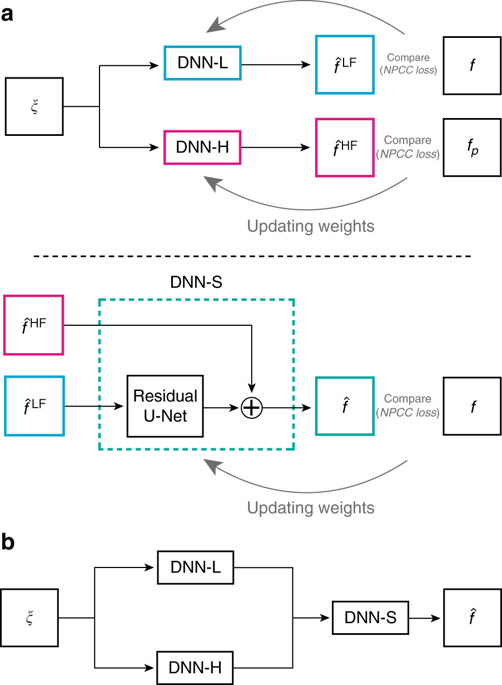Light: Science & Applications ( IF 19.4 ) Pub Date : 2020-03-09 , DOI: 10.1038/s41377-020-0267-2 Mo Deng , Shuai Li , Alexandre Goy , Iksung Kang , George Barbastathis

|
The quality of inverse problem solutions obtained through deep learning is limited by the nature of the priors learned from examples presented during the training phase. Particularly in the case of quantitative phase retrieval, spatial frequencies that are underrepresented in the training database, most often at the high band, tend to be suppressed in the reconstruction. Ad hoc solutions have been proposed, such as pre-amplifying the high spatial frequencies in the examples; however, while that strategy improves the resolution, it also leads to high-frequency artefacts, as well as low-frequency distortions in the reconstructions. Here, we present a new approach that learns separately how to handle the two frequency bands, low and high, and learns how to synthesize these two bands into full-band reconstructions. We show that this “learning to synthesize” (LS) method yields phase reconstructions of high spatial resolution and without artefacts and that it is resilient to high-noise conditions, e.g., in the case of very low photon flux. In addition to the problem of quantitative phase retrieval, the LS method is applicable, in principle, to any inverse problem where the forward operator treats different frequency bands unevenly, i.e., is ill-posed.
中文翻译:

学习合成:低光子数下的可靠相位检索
通过深度学习获得的逆问题解决方案的质量受到在培训阶段从示例中学习到的先验知识的限制。特别是在定量相位检索的情况下,在重建过程中往往会抑制训练数据库中代表性不足的空间频率(通常是在高频段)。已经提出了临时的解决方案,例如在示例中预先放大高空间频率。但是,尽管该策略提高了分辨率,但也会导致高频伪像以及重建过程中的低频失真。在这里,我们提出了一种新的方法,该方法分别学习如何处理低频和高频两个频带,并学习如何将这两个频带合成为全频带重建。。在非常低的光子通量的情况下。除了定量相位检索的问题外,LS方法原则上适用于前向算子不均匀地对待不同频带(即)的任何反问题。,病态。



























 京公网安备 11010802027423号
京公网安备 11010802027423号